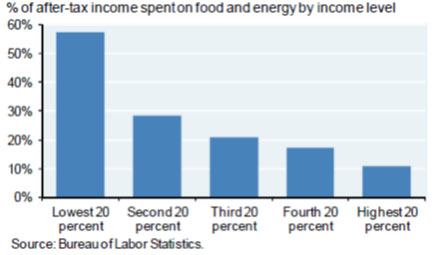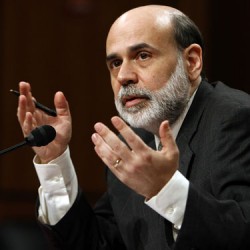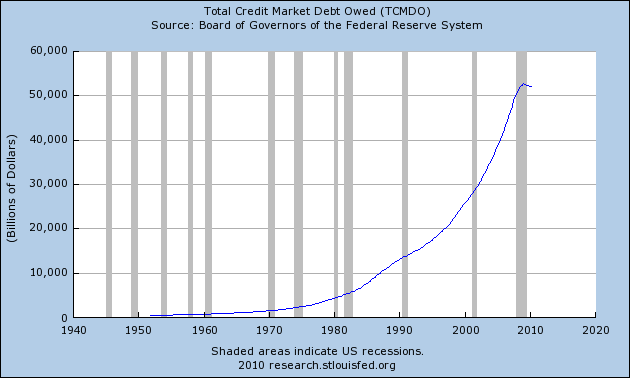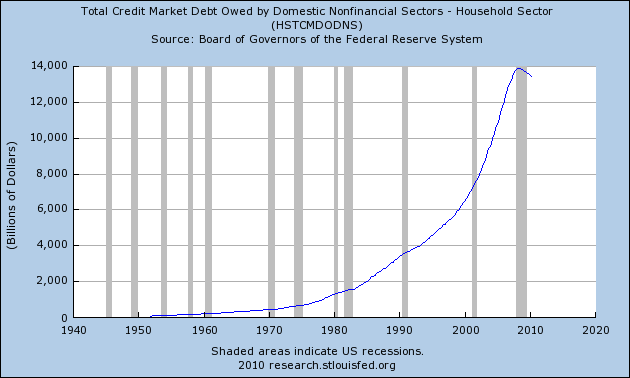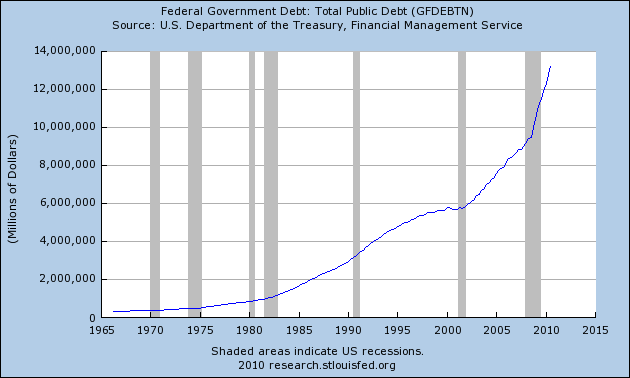 Although it received very little coverage in the mainstream media, Barack Obama made some comments about globalism during his speech in Mumbai, India that were very eye-opening. As he was discussing the new realities of world trade in 2010, Obama warned against “those who see globalization as a threat” and he spoke of the “integrated world” in which we all now live. But is merging the entire globe into a one world economy, a one world financial system and a one world labor market really the best thing for the American people?
Although it received very little coverage in the mainstream media, Barack Obama made some comments about globalism during his speech in Mumbai, India that were very eye-opening. As he was discussing the new realities of world trade in 2010, Obama warned against “those who see globalization as a threat” and he spoke of the “integrated world” in which we all now live. But is merging the entire globe into a one world economy, a one world financial system and a one world labor market really the best thing for the American people?
For the past two decades, all U.S. presidents have been heralding the benefits of merging the American economy with the rest of the globe. George Bush Sr., Bill Clinton, George W. Bush and Barack Obama have all steadfastly supported the emerging one world economy. These presidents have each used different terms to describe this process such as “globalism”, “globalization”, “an integrated world”, “the global economy” and even “a New World Order”, but they have all meant the same thing. All of these presidents have sought to integrate the United States even more deeply into the developing one world economic system.
Barack Obama showed very clearly how he feels about globalism when he made the following statement during his speech in Mumbai….
“This will keep America on its toes. America is going to have to compete. There is going to be a tug-of-war within the US between those who see globalization as a threat and those who accept we live in a open integrated world, which has challenges and opportunities.”
This is something that Barack Obama has obviously thought quite a bit about. In fact, during the same speech he warned that those supporting globalization will need to “guard against” those who would seek to put up barriers to the full integration of the economies of the world….
“If the American people feel that trade is just a one-way street where everybody is selling to the enormous US market but we can never sell what we make anywhere else, then the people of the US will start thinking that this is a bad deal for us and it could end up leading to a more protectionist instinct in both parties, not just among Democrats but also Republicans. So, that we have to guard against.”
But in this new “global economy”, aren’t jobs leaving the United States and heading to developing nations at a blinding pace? Of course, but apparently we are just supposed to shut up and accept this new reality. In fact, Obama says that persistently high unemployment is “a new normal” that we are all just going to have to get used to.
Virtually all of the proponents of globalism understand that the process of merging the United States into a one world economy will be at least somewhat painful for the American people. Our wages are going to have to go down and our standards of living are going to have to fall, according to them.
During this period of “adjustment”, a “struggling economy” is just going to have to be tolerated. In fact, Obama says that the U.S. economy might not be “fixed” for quite some time. Obama now claims that there is a limit to what the U.S. government can do to help the economy….
“Especially an economy this big, there are limited tools to encourage the kind of job growth that we need.”
But couldn’t Obama and the U.S. Congress pass laws that would discourage the offshoring and outsourcing of our jobs?
Of course.
Couldn’t they cut regulations and taxes and encourage firms to keep factories in the United States?
Of course.
But instead, Obama and the U.S. Congress have just been piling on more taxes and more regulations and have made the business environment in the U.S. so toxic that it is amazing that anyone is willing to stay in this country at this point.
Meanwhile, every single month more of our jobs, more of our factories and more of our wealth gets shipped overseas never to return.
Every day there is more depressing news about the U.S. economy. For example, it has just been announced that Harley-Davidson has decided to open a shiny new assembly plant in India. Meanwhile, formerly great American manufacturing cities such as Detroit have turned into rotting hellholes.
The American people are not being told the truth. The following are 20 reasons why Barack Obama is wrong, wrong, wrong about globalization….
#1 American workers are being merged into a global labor pool where they must directly compete for jobs with workers on the other side of the globe that make less than ten percent of what an average American worker makes. In such an environment, it is inevitable that jobs are going to flow away from areas where labor is expensive and to areas where labor is cheaper.
#2 Globalization has caused the U.S. trade deficit to absolutely explode. In 1985, the U.S. trade deficit with China was 6 million dollars for the entire year. In the month of August alone, the U.S. trade deficit with China was over 28 billion dollars.
#3 Today, the United States spends approximately $3.90 on Chinese goods for every $1 that China spends on goods from the United States. This represents a massive transfer of wealth from the American people to China.
#4 According to a new study conducted by the Economic Policy Institute, if the U.S. trade deficit with China continues to increase at its current rate, the U.S. economy will lose over half a million jobs this year alone.
#5 The United States has lost approximately 42,400 factories since 2001.
#6 The United States has lost a staggering 32 percent of its manufacturing jobs since the year 2000.
#7 Even high technology industries are leaving America. Manufacturing employment in the U.S. computer industry is actually lower in 2010 than it was in 1975.
#8 In 1959, manufacturing represented 28 percent of all U.S. economic output. In 2008, it represented only 11.5 percent.
#9 As of the end of 2009, less than 12 million Americans worked in manufacturing. The last time that less than 12 million Americans were employed in manufacturing was in 1941.
#10 With so much manufacturing leaving the United States, is it any wonder why people can’t find jobs? The “official” unemployment rate in the United States has been at nine and a half percent or above for 14 consecutive months.
#11 Today, there are at least 1.5 million “99ers” – those Americans that have completely exhausted all 99 weeks of unemployment benefits and that still do not have jobs.
#12 Our dependence on foreign oil also represents an absolutely shocking transfer of wealth from the American people to the oil exporters of the Middle East. Back in 1980, the United States imported approximately 37 percent of the oil that we use. Now we import nearly 60 percent of the oil that we use.
#13 Energy imports account for about approximately one-fourth of the U.S. trade deficit.
#14 In states such as Mississippi, people spend approximately 6.35 percent of their incomes just on gasoline, according to a recent report by the National Resources Defense Council.
#15 Americans end up paying to support American workers one way or another. Either they buy American-made products and services that provide jobs for American workers, or they pay to support unemployed American workers on welfare. Today, over 42 million Americans are on food stamps. A record number of Americans are receiving long-term unemployment benefits. One way or another, Americans are going to pay to take care of American workers.
#16 The U.S. trade deficit is running about 40 or 50 billion dollars a month in 2010. The United States spends 40 to 50 billion more on goods and services from the rest of the world each month than they spend on goods and services from us. That means that by the end of the year, approximately half a trillion dollars (or more) of our wealth will have left the United States for good.
#17 All of this wealth leaving the United States is having a huge impact on the standard of living of average Americans. Ten years ago, the United States was ranked number one in average wealth per adult. In 2010, the United States has fallen to seventh.
#18 It is now just a matter of time until India is going to pass us as an economic power. In fact, the economy of India is projected to become larger than the U.S. economy by the year 2050.
#19 It is now being projected that China will soon dwarf us as an economic power. One prominent economist now says that the Chinese economy will be three times larger than the U.S. economy by the year 2040. According to one recent study, China could become the global leader in patent filings by next year.
#20 China has been accumulating a gigantic mountain of dollars from all of the wealth we have been sending them each month, and they have been lending massive amounts of money back to us. Over the past few decades, the communist Chinese have been able to accumulate approximately $2.5 trillion in foreign currency reserves, and the U.S. government now owes them close to 900 billion dollars. We constantly have to send top government officials over there to beg them to continue to lend us money. This is a direct threat not only to our financial system, but also to our national security.
So, in light of all of those facts, can anyone out there possibly defend Barack Obama’s position that globalization is good and that we should be happy that we are being merged into a one world economy?
Sadly, there are very, very few politicians in either major political party that will even talk about the negative effects of the emerging one world economy. It is almost as if there is an unspoken consensus that globalism is the future and that it is a good thing for America.
But it is not a good thing for America. Unless fundamental changes are made, America will continue to bleed wealth, will continue to bleed factories and will continue to bleed jobs.
The American people need to wake up and starting saying “NO” to globalization. If we continue to vote for politicians that support merging our economy with economies that allow workers to be paid slave labor wages, then we are going to see even more waves of horrific unemployment and we will continue to see the standard of living of middle class Americans diminish.
This is not a drill. America is being deindustrialized. The greatest economic machine in the history of the world is being dismantled.
Eventually, all of our cities are going to end up looking just like Detroit if we allow this to continue.
Is that what you want?


